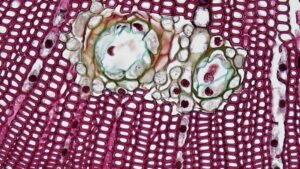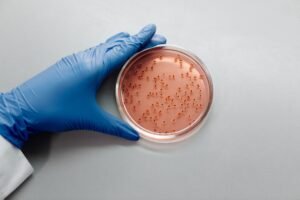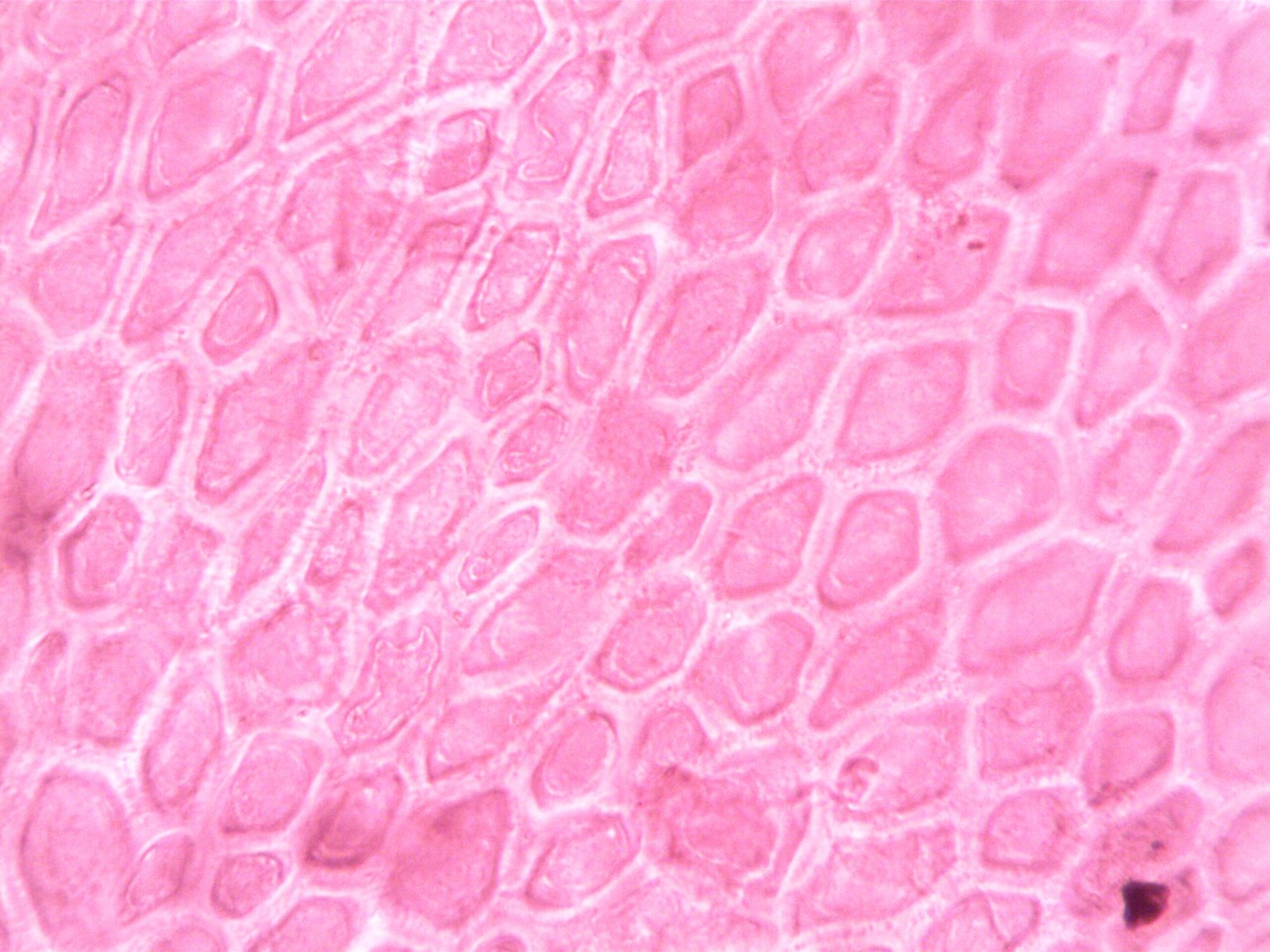Squamous epithelial cells are found in all parts of the human body. Every minute element of the human body contributes significantly to preserving our general health and wellbeing. Likewise, squamous epithelial cells. These extraordinary cells are present in all bodily tissues and perform essential tasks that improve our general health. We shall examine the composition, purpose, and significance of squamous epithelial cells in this article.

What exactly is Epithelium?
The epithelium is characterized as a group of closely packed cells with minimal extracellular matrix. A varying quantity of loose connective tissue, which includes numerous blood arteries, supports all epithelia.
Your body contains a wide variety of epithelial tissue types. Epithelial tissue includes, for example: the epidermis, the top layer of your skin. your intestines’ lining. your respiratory tract’s lining. your abdominal cavity’s lining. your adipose tissue.

Classification of Epithelium
Epithelial cells make up the functional component of numerous glands and cover both the internal and external body surfaces.
As a result, the epithelia are typically split into two groups:
1. Glandular Epithelium
2. Covering Epithelium.

Subdivision of Classification
A.COVERING EPITHELIUM (MEMBRANOUS EPITHELIUM)
1.SIMPLE EPITHELIUM (SINGLE LAYER)
a. Simple Squamous Epithelium
b. Simple Cuboidal Epithelium
c. Simple Columnar Epithelium—*Ciliated and Non-ciliated
d. Simple Pseudo stratified
2.Stratified EPITHELIUM (MULTIPLE LAYER)
a. Stratified Squamous—*Keratinized and Non-Keratinized
b. Stratified Cuboidal
c. Stratified Columnar
d. Stratified Transitional
B. GLANDULAR EPITHELIUM
1. Endocrine glands Epithelium
2. Exocrine glands Epithelium
Squamous Epithelial cells
(Simple Squamous Epithelial Cells): what are they?
Epithelial Squamous cells are a subset of Simple Epithelium(Unilaminar Epithelium), which belongs to the Covering Epithelium and has a single layer of cells. Epithelial cells, the basic units of our body’s tissues, including squamous epithelial cells. Their appearance, which is flat, thin, and scale-like, describes these cells. The Latin word “squama,” which means scale, is where the name “squamous” comes from. They can cling to one another securely and provide a barrier of protection because to their flattened shape.

STRUCTURE OF SQUAMOUS Epithelial cells
( Simple Squamous Epithelial Cells)
Epithelial Squamous cells are flat, thin cells that roughly resemble polygons. Each flat cell has a basal surface that sits on the basement membrane and a free surface that confronts an organ cavity or lumen.
The adjacent cells fit tightly together to create a continuous sheet and have serrated or wavy edges. Each cell has a flattened nucleus in the middle, which gives the cell a fusiform (spindle-shaped) look because the nucleus causes the core area of each cell to be thicker than the peripheral cytoplasm, which has a thickness of 0.1 micrometer or less. It is common to see Epithelial Squamous cells lining surfaces engaged in passive transport (diffusion) of either gases, as in the lungs(Alveoli), or fluids, as in the walls of blood capillaries.
The delicate lining of the pleura, pericardium, and peritoneal cavities, which allow the movement of tissue fluid into and out of these cavities, is also formed by epithelial squamous cells. Despite having a seemingly straightforward structure, these cells play a number of crucial activities. Water and gases can diffuse quickly through epithelial squamous cells, but in many places they are actively being transported.
Since blood vessels are not in direct contact with the epithelial cells, they obtain all of their nutrients, including oxygen and metabolites, through diffusion. The diffusion of vital nutrients into the basic squamous epithelium is thus made possible thanks in large part to the basement membrane. Integrins are receptors on the cell membranes of epithelial cells that allow them to interact with the basement membrane.
SQUAMOUS Epithelial CELLS (Simple Squamous Epithelial Cells) Location
Simple squamous epithelial cells lines the narrow portion of the loop of Henle(Renal Glomeruli). It forms a nearly universal presence in organs and tissues throughout the body since it lines the whole circulatory system(lining of the lymphatic, blood vessels and heart).
Lung air sacs
Ventral body cavity lining (Serosae).
Function of Squamous Epithelial Cells
The cells’ borders are slightly asymmetrical, and together they create a lining or covering. The basic squamous epithelium allows gases and other substances to diffuse over the single layer of squamous cells. Gases and other chemicals can pass through this type of epithelial cell’s single thin layer because Simple Squamous Epithelial cells are extremely thin.
This explains why this type of epithelial cells are commonly found in locations where gas exchange takes place, such as the alveoli of the lungs and inside blood vessels, the regions of gas exchange in the lungs as well as the interchange of nutrients and wastes at blood capillaries are made possible by the simple squamous epithelial cells.
Squamous Epithelial cells play a vital role in Defense and secretion, these cells creates a frictionless, smooth surface on which secretion can occur. The underlying tissues are somewhat protected by the epithelium against poisons, foreign particle invasion, and less severe physical stress. Several of these cells form mucus, which serves as a lubricant. Extreme mechanically strained zones cannot receive protection. The absence of blood vessels in the tissues of the epithelium prevents bleeding from abrasion.
Importance of Squamous Epithelial Cells
Squamous Epithelial Cells Are Important:
The integrity and efficient operation of several physiological systems depend on squamous epithelial cells. Our bodies would be more prone to infections, wounds, and dehydration without them. Let’s examine their significance in some detail:
Squamous epithelial cells make up the majority of the epidermis, the top layer of our skin. These cells serve to maintain healthy skin by providing defense against UV radiation, infections, and water loss. Squamous epithelial cells in the lungs are essential for effective gas exchange. Our ability to breathe and oxygenate our blood can be compromised by any damage to these cells.
Squamous epithelial cells in the mouth help in the early stages of digestion and prevent infections. It’s crucial to practice good oral hygiene to safeguard these cells.
Squamous epithelial cells also line the female reproductive system, particularly the cervix, in terms of reproductive health. Cervical cancer can be identified and prevented with the use of routine pap smears, which can find abnormalities in these cells.

Epithelial Cells in Urine:
It’s not necessarily a problem if there are a few squamous epithelial cells in the urine in a moderate number. Further testing and treatment, however, could be required if the quantity of these cells is persistently high or if there are additional indications of a urinary tract infection.
Epithelial cells in urine normal range:
Typically, there are 0–5 squamous epithelial cells per high-power field (HPF) in urine which is within the normal range.
Squamous Epithelial cells may occasionally indicate an infection, inflammation, or injury to the bladder or urethra. These cells, however, can also be found in the urine due to other illnesses such cancer of the bladder or urethra. Squamous epithelial cells in urine cannot be used to diagnose cancer on their own. To identify the underlying reason and provide a conclusive diagnosis, additional examinations, such as a biopsy, CT scan, or MRI, may be required.
If you are worried that your urine contains squamous epithelial cells, speak with a medical professional.
There are a number of reasons why epithelial cells could be found in the urine, including:
1.Too many epithelial cells in the urine, especially in women, is most frequently caused by contamination during specimen collection. Using an unclean collection cup or filthy genitalia can both lead to contamination. Use a damp wipe to clean the genital region to prevent specimen contamination. Before urinating into the collection cup, urinate into the toilet to flush out urethral germs. Send the sample in right away.
2.Urinary Tract Infections (UTIs): UTIs are primarily responsible for epithelial cells found in urine.
3. Kidney issues: Numerous tubular or columnar-shaped epithelial cells in urine could indicate kidney issues.
4. Kidney stones: One of the complications of kidney stones is kidney damage or failure. Epithelial cells in urine may rise as a result of kidney injury.
Epithelial cell counts in urine that are higher than usual are frequently caused by Chronic Renal disease.
5. Injuries to the urinary system can result from procedures like catheterization , Squamous epithelial cells shed more often as a result of this.
Conditions including urethritis, bladder cancer, and urethral cancer can all result in an increase in the amount of epithelial cells that are shed into the urine.
6. A compromised immune system might lead to an illness progressing to a more severe level. In turn, this can lead to the development of UTI symptoms and an increase in the amount of epithelial cells in the urine.
7. The number of epithelial cells in the urine increases in people with autoimmune liver disease who frequently get urinary tract infections.
8. In Diabetes since the body cannot fight the germs, high blood glucose levels can raise the chance of acquiring UTIs, this may lead to an increase in epithelial cells in urine.
9. Prolonged high blood pressure can prevent the kidneys from functioning properly. As a result, kidney injury may lead to an increase in epithelial cells in urine.
10. A prostatic enlargement may press against and compress the urethra. Incomplete bladder emptying might result in urinary tract infections ultimately shedding epithelial cells in urine.
11. Since the woman’s body goes through several changes throughout pregnancy, a greater epithelial cell count in the urine is normal. Additionally, UTIs are frequently experienced during pregnancy and may cause an increase in epithelial cells.

Squamous Epithelial Cells in Pap Smear and Pap Smear Results
1.Negative. Therefore, no cell alterations were discovered.
2. Indefinite. This outcome is typical. It indicates that your cells may be aberrant. This might be the result of an infection, such as the herpes virus or a yeast infection. Test findings may also be impacted by hormonal changes brought on by menopause or pregnancy.
3. Positive. This denotes the discovery of cell alterations. It typically does not indicate that you have cervical cancer. Different abnormal test outcomes exist. These are most typical.

PAP Smear Analysis Report
1. ASC-US stands for abnormal squamous cells of unknown significance.
The most typical aberrant finding is this one. Sometimes the outcome is viewed as uncertain rather than aberrant. Your cervix’s outer layer is made up of squamous cells. The squamous cells don’t appear normal as a result of this finding. This can be the result of an infection, such HPV.
2. AGC stands for abnormal glandular cells. In your cervix and uterus, glandular cells generate mucus. This finding indicates that some glandular cells don’t appear natural. As opposed to ASC (atypical squamous cells), these cell alterations are typically more severe. This indicates a higher likelihood of precancer or cancer.
3. Squamous intraepithelial lesions of low grade(LSIL)
Sometimes this outcome is referred to as mild dysplasia. It denotes low-grade alterations that are frequently brought on by an HPV infection. A change might disappear on its own.
4. High-grade squamous intraepithelial lesions (HSIL) Additionally known as moderate or severe dysplasia, this outcome. It suggests that HPV is active and creating more significant alterations. If not treated, they could develop into cancer.
5. Atypical squamous cells (ASC-H), which cannot rule out HSIL There are some abnormal cells, and it’s possible that HSIL is also present.
6. Adenocarcinoma in situ, or AIS
In the glandular tissue, an advanced lesion is discovered. If not treated, it might develop into cancer, Squamous cell carcinoma or adenocarcinoma of the cervical cavity.
Although rare, cancer cells can be found via Pap tests. Women who undergo routine cancer screenings typically do not have enough time for cancer to develop.
Conclusion
In conclusion, squamous epithelial cells are an important part of the tissues in our bodies and perform a number of vital tasks. They can create protective layers in organs like the epidermis, the lining of the esophagus, and the alveoli of the lungs thanks to their flattened and scale-like appearance. Squamous epithelial cells can stretch and extend to adapt to changes in organ size and shape because they are very flexible.
Due to their thin nature and dense packing, these cells are crucial in enabling diffusion and filtration processes. Additionally, they protect underlying tissues’ integrity and functionality by acting as a barrier against pathogens and toxic substances.
The variety and importance of squamous epithelial cells emphasize their importance in many physiological processes as well as their utility in medical research and diagnostics. Understanding their structure and function advances our knowledge of human biology and pathology by offering insights into potential cures and interventions for a variety of diseases and maladies. As we continue to deepen our understanding of squamous epithelial cells, we open the door to better treatment and a greater awareness of our own bodies.


Bravo!. A well versed paper about Epithelium, types and Appearance of Epithelial cells in Urine RE , Pap smear etc.A must read Blog!!
Bravo! . A well versed Blog about Epithelium types and their appearance in Urinalysis, Pap smear etc. Highly recommended!!!!
It’s very interesting nd well written.keep it up.